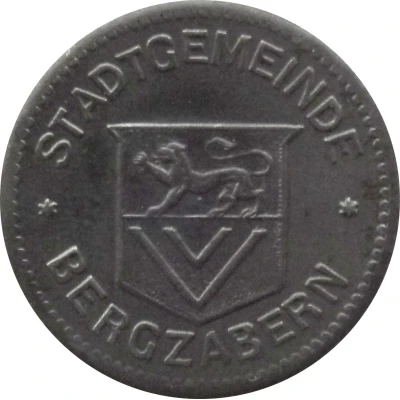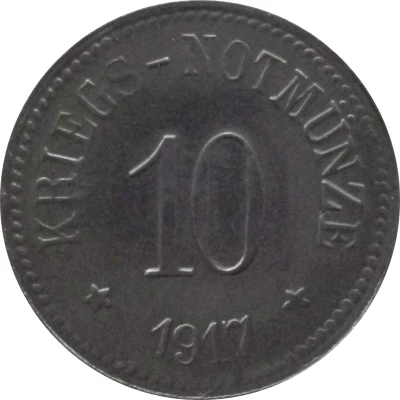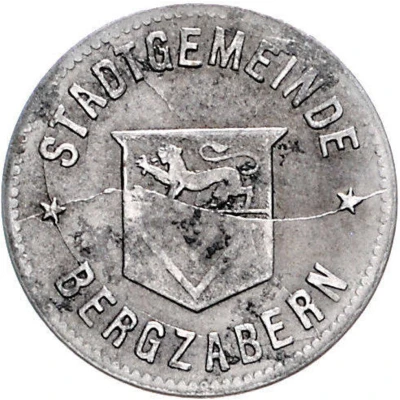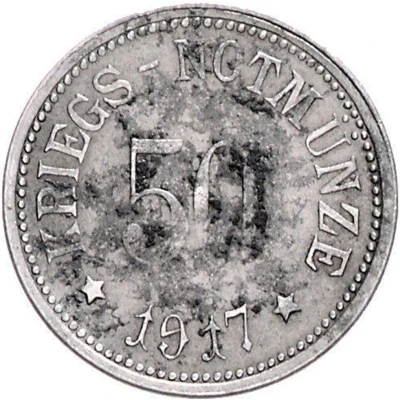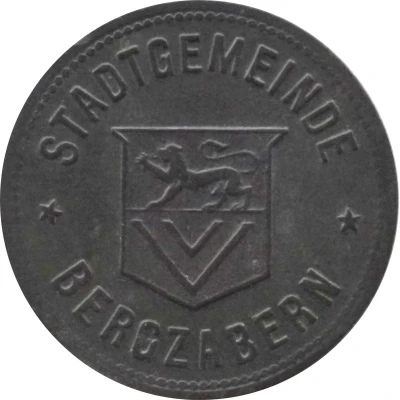
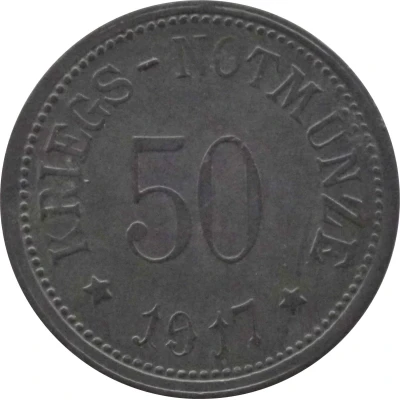

© Willem63 (CC BY-NC-SA)
50 Pfennigs - Bergzabern
1917 year| Zinc | 2.7 g | 22.3 mm |
| Issuer | City of Bergzabern (Federal state of Bavaria) |
|---|---|
| Emperor | William II (Wilhelm II) (1888-1918) |
| Type | Standard circulation coin |
| Year | 1917 |
| Value | 50 Pfennigs (50 Pfennige) (0.50) |
| Currency | Mark (1914-1924) |
| Composition | Zinc |
| Weight | 2.7 g |
| Diameter | 22.3 mm |
| Thickness | 1.1 mm |
| Shape | Round |
| Technique | Milled |
| Orientation | Medal alignment ↑↑ |
| Demonetized | Yes |
| Updated | 2024-10-04 |
| Numista | N#190900 |
|---|---|
| Rarity index | 89% |
Reverse
Legend and date surrounding denomination centered
Script: Latin
Lettering:
KRIEGS-NOTMÜNZE
50
★ 1917 ★
Edge
Plain
Comment
Variety comparison:Interesting fact
One interesting fact about the 50 Pfennigs - Bergzabern 1917 coin is that it was issued during a time of economic turmoil in Germany, known as the "Inflationary Period" (1914-1923). During this time, the value of the German mark (the national currency) dropped significantly, leading to a period of hyperinflation. As a result, many Germans turned to alternative forms of currency, such as local currencies like the Bergzabern 50 Pfennigs coin, which was issued by the City of Bergzabern in 1917. This coin, made of zinc and weighing 2.7 grams, was used as a form of local currency in the city and surrounding areas, and it remains a unique and interesting artifact from this tumultuous period in German history.
